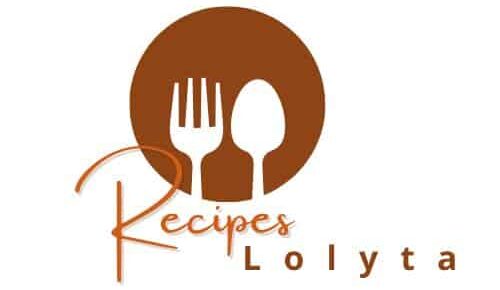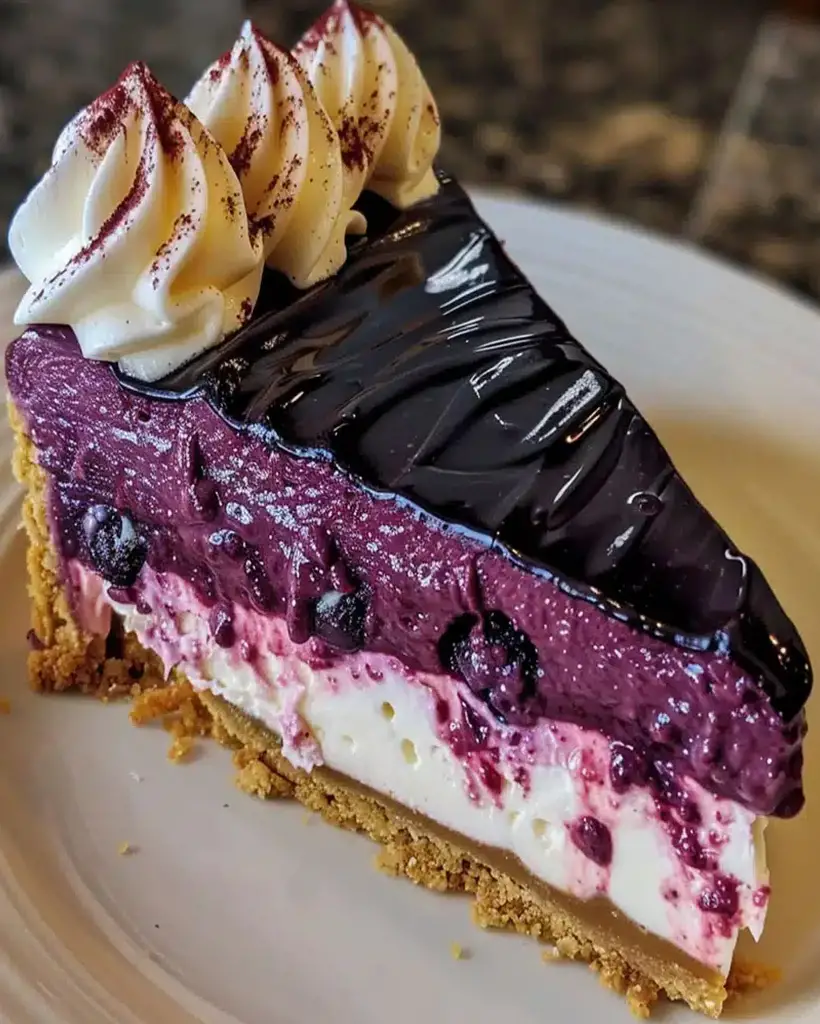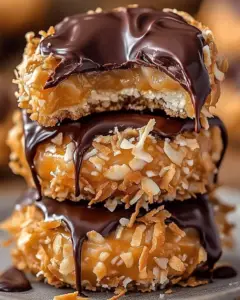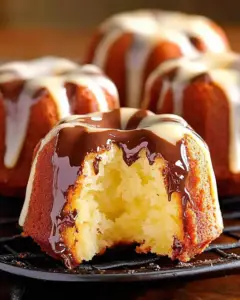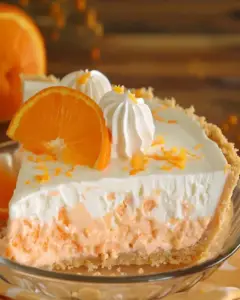Easy Blueberry Velvet Cheesecake Recipe: A Creamy Delight
Indulging in a slice of Easy Blueberry Velvet Cheesecake is like a dream come true for any dessert lover. The luscious blend of creamy cheese, sweet blueberries, and a hint of vanilla creates a rich and flavorful experience. This cheesecake recipe is perfect for impressing guests at any gathering and brings a touch of elegance to your dessert table. With its vibrant purple hue and velvety texture, this cheesecake is sure to be the star of any occasion.
What sets this recipe apart is its simplicity and the burst of fresh blueberry flavor that complements the silky smooth cheesecake base. You don’t need to be a professional baker to achieve bakery-quality results; its straightforward method and everyday ingredients make it accessible for home cooks of all levels. Your taste buds will revel in the gentle tang of the cream cheese, balanced beautifully by the sweet, juicy blueberries.
Quick Recipe Highlights
- Flavor Profile: This cheesecake boasts a tangy and creamy base with sweet and juicy blueberry compote swirled throughout.
- Texture: A velvety, smooth cheesecake filling with a slightly crunchy graham cracker crust that offers the perfect contrast.
- Aroma: The delightful fragrance of vanilla and blueberries fills your kitchen, inviting all senses to the table.
- Visual Appeal: A picturesque dessert with a deep purple swirl and a golden crust, offering an eye-catching contrast.
- Skill Level Needed: Perfect for intermediate home bakers looking for a rewarding yet manageable dessert project.
- Special Equipment: A springform pan is essential to ensure easy removal and perfect presentation.
Recipe Overview
- Difficulty Level: Medium. While the recipe includes several steps, they are easy to follow, making this a great project for building baking skills.
- Category: Dessert. Ideal for dinner parties, holiday feasts, or anytime you crave a special treat.
- Cuisine: This recipe is influenced by classic American cheesecake traditions, with a modern twist featuring blueberries.
- Cost: Moderate. The ingredients for this cheesecake are reasonably priced, with fresh or frozen blueberries available year-round.
- Season: Best made during blueberry season for the freshest flavor, though frozen berries make it feasible any time of year.
- Occasion: Suitable for birthdays, bridal showers, or simply a weekend treat to indulge in sweet bliss.
Why You’ll Love This Recipe
The Easy Blueberry Velvet Cheesecake is a feast for the senses. Its smooth and creamy texture complements the graham cracker crust’s subtle crunch, providing a delightful contrast in every bite. Each mouthful of this cheesecake offers a perfect balance of tangy cream cheese and sweet blueberries, making it an irresistible treat for dessert aficionados.
This recipe is crafted with convenience in mind. With simple steps and no complicated techniques needed, even a novice baker can achieve success. The use of common kitchen staples and easily accessible ingredients means you can prepare this dessert without needing a trip to a specialty store.
Nutritionally, this cheesecake offers a healthier indulgence option compared to other desserts. By using fresh fruit and controlling sugar levels, you can enjoy a delicious treat without compromising on your dietary goals. Additionally, you can adjust the sweetness to suit your preference.
When entertaining, this cheesecake is sure to impress guests with its stunning presentation and professional-level taste. Whether served at a dinner party or casual gathering, it never fails to initiate conversations and compliments.
Cost-effectiveness and accessibility are fundamental to this recipe. You can create a show-stopping dessert without breaking the bank, making it a practical choice for those looking to indulge while being mindful of their budget.
Historical Background and Cultural Significance
Cheesecake has a rich and varied history, with its origins tracing back to ancient Greece. The Greeks made a simple cake consisting of cheese, honey, and wheat, believed to be served to athletes during the first Olympic Games. This early version laid the foundation for what would become an international dessert favorite.
The recipe evolved as it spread across Europe, with each culture adding its own unique spin. In the 18th century, the addition of cream cheese in the U.S. gave birth to the classic New York-style cheesecake, a rich and creamy variant celebrated by dessert lovers worldwide.
Today, cheesecake has myriad regional variations, reflecting diverse culinary traditions. The addition of blueberries is a nod to American flavors, enhancing the classic cheesecake with a fruity twist. While the recipe continues to evolve, the essence of cheesecake as a luxurious, indulgent dessert remains a constant.
From early Greek sports feasts to modern celebratory tables, cheesecake holds a special place in culinary culture, symbolizing hospitality and indulgence across many societies. Its versatility and adaptability ensure that it will continue to captivate dessert enthusiasts for generations.
Ingredient Deep Dive
Blueberries, the star of this cheesecake, are more than just a sweet addition; they are a superfood rich in antioxidants and vitamin C, known for supporting heart health and reducing inflammation. Native to North America, blueberries have been enjoyed for centuries, initially consumed by Indigenous peoples before becoming a staple in American cuisine.
Cream cheese, originally developed in the United States, forms the backbone of this dessert’s texture. Its luxurious creaminess and mild taste provide the perfect canvas for the tartness of the blueberries. For the best results, select full-fat cream cheese for the ultimate rich flavor and avoid substitutes that may affect the cheesecake’s consistency.
When selecting blueberries, choose plump, firm berries with a deep purple-blue color for the freshest flavor and maximum sweetness. If using frozen berries, ensure they are thoroughly thawed and drained to prevent excess moisture from altering the cheesecake’s texture.
Graham crackers form the essential crust of this cheesecake, adding a crunchy contrast to the creamy filling. Choose high-quality graham crackers for their flavor and texture, or opt for a gluten-free version if needed. Store crackers in an airtight container to maintain freshness and prevent staleness.
Vanilla extract adds depth and fragrance to the cheesecake, enhancing the natural sweetness of the other ingredients. Use pure vanilla extract for the best flavor, as synthetic versions can’t compare in aroma and richness.
Common Mistakes to Avoid
- Avoid overbeating the cream cheese to prevent incorporating excess air, which can lead to cracks in the cheesecake.
- If using frozen blueberries, ensure they are completely thawed and drained to avoid a watery filling.
- Do not skip the water bath; it ensures even baking and helps prevent the top from cracking.
- Let the cheesecake cool gradually to prevent sudden temperature shifts that can cause surface cracks.
- Ensure all ingredients are at room temperature before mixing to achieve a smooth, creamy texture.
- Resist the urge to open the oven door during baking, which can disturb the cooking process and cause sinking.
- Cool the cheesecake properly in the pan before attempting to remove it to maintain its shape and texture.
- Always bake until the edges are set, and the center is slightly jiggly for a perfectly cooked cheesecake.
Essential Techniques
When preparing a cheesecake, mastering the water bath technique is crucial. This method creates a steamy environment in the oven, ensuring that the cheesecake bakes gently and evenly. To do this, wrap the outside of your springform pan in aluminum foil, protecting it from water seepage, and place it in a larger pan filled with hot water before baking.
Achieving a smooth and lump-free cheesecake batter is essential. Always use room temperature ingredients to ensure they combine well. Start by beating the cream cheese until smooth, then gradually add in the sugar and other ingredients, mixing just until blended to prevent overworking the batter.
Judging doneness can be tricky. The cheesecake is ready when the edges are set, and the center slightly wobbles. Avoid overbaking; the residual heat will finish cooking the cheesecake as it rests. Wait patiently for the cheesecake to cool completely in the oven with the door ajar, allowing it to firm up without cracks.
Pro Tips for Perfect Easy Blueberry Velvet Cheesecake
When it comes to the crust, press the graham cracker mixture firmly into the base and slightly up the sides of the pan to create a sturdy foundation that won’t crumble when sliced.
Add cornstarch or flour to the cream cheese mixture. It helps bind the ingredients, reducing the likelihood of the cheesecake cracking.
Room temperature ingredients are key. Plan ahead and allow enough time for the cream cheese, eggs, and other refrigerated ingredients to warm up; this aids in achieving a creamy consistency.
After baking, cool the cheesecake gradually in the oven with the door slightly ajar. This prevents the dessert from experiencing a sudden temperature change, which can cause cracking.
For a flawless edge, run a knife around the cheesecake’s rim once it has cooled for about 10-15 minutes after baking. This will help it release cleanly from the pan.
Variations and Adaptations
Explore regional variations by substituting blueberries with other local fruits like raspberries or blackberries. Each fruit changes the flavor profile, offering a delightful twist.
Seasonal adaptations are easy; simply switch out fruit toppings based on what’s fresh and available. In winter, a cranberry sauce makes a festive alternative to blueberries.
Adapt the recipe to suit dietary needs by using gluten-free graham crackers or dairy-free cream cheese, ensuring it remains accessible to those with specific dietary preferences.
Enhance the flavor by adding a touch of lemon zest or a splash of almond extract to the batter, which pairs beautifully with blueberries.
For a textural contrast, sprinkle chopped nuts like almonds or pecans on top before serving, adding a crunchy element to the creamy cheesecake.
Serving and Presentation Guide
To plate cheesecake beautifully, slice using a hot, wet knife, wiping the blade clean between cuts for pristine portions. Serve on elegant dessert plates to enhance the presentation.
Garnish with whipped cream rosettes or fresh blueberries for a sophisticated touch. A dusting of powdered sugar also adds visual appeal without overwhelming the flavors.
Traditionally, cheesecake pairs well with a simple fruit sauce; consider a warm berry compote to keep the spotlight on the blueberry theme.
For modern presentation, use fresh mint leaves or edible flowers to add a pop of color and freshness to your dish.
Serve the cheesecake slightly chilled for optimal texture, but remove it from the refrigerator about 20 minutes before slicing to allow flavors to develop.
Wine and Beverage Pairing
Complement the cheesecake’s creamy richness with a light, sweet Riesling or a glass of Moscato for a delightful pairing that enhances the dessert’s fruitiness.
Non-alcoholic options include a refreshing blueberry iced tea or lemonade that echoes the cake’s primary flavor and cleanses the palate between bites.
For those enjoying coffee or tea, a black coffee or a lightly brewed chamomile tea balances the richness without overwhelming the palate.
When serving wine, ensure the bottles are properly chilled but avoid over-chilling, which can mute the wine’s aromatics and flavors, especially when paired with dessert.
Using elegant glassware elevates the dining experience, making the pairing a memorable part of the meal.
Storage and Shelf Life
To store cheesecake, keep it covered in the refrigerator, ideally in an airtight container or wrapped in plastic wrap, to maintain moisture and prevent fridge odors from altering the flavor.
For optimal freshness, consume within 3-5 days, although it’s unlikely leftovers will last that long with such tempting flavors.
To extend shelf life, consider freezing individual slices wrapped tightly in plastic and then foil. When ready to enjoy, allow them to thaw overnight in the refrigerator.
Be mindful of signs of spoilage, like a sour taste or discoloration, to ensure food safety.
When reheating or serving leftovers, doing so gently is key. The best cheesecake texture is usually served cold, but you might let it sit at room temperature for a few minutes.
Make Ahead Strategies
This cheesecake is ideal for making ahead, as it benefits from resting time, which enhances its flavor and texture. Prepare it a day in advance to give it ample time to set.
Store it in the refrigerator with a loose cover to prevent condensation from dropping onto the surface, which can affect the texture.
If assembling components like fruit toppings, do so shortly before serving to maintain their fresh colors and textures.
Maintain a refrigerated holding environment between preparation stages to keep ingredients fresh and safe for consumption.
Garnishes should be added just before serving to retain their vibrant appearance and flavor.
Scaling Instructions
This recipe scales beautifully; adjust the ingredient amounts proportionally when doubling or tripling. For best results, use multiple pans rather than a larger one when increasing batch size.
When halving the recipe, use a smaller springform pan to maintain thickness and baking time.
Adjust baking times slightly based on changes in volume; more or less mixture in the pan can impact how quickly or slowly the cheesecake cooks.
Always taste-test when scaling to ensure seasoning and sweetness are balanced for your new batch size.
Strong ingredients should be scaled conservatively to maintain a harmonious flavor profile.
Nutritional Deep Dive
This cheesecake satisfies dessert cravings while providing nutritional benefits from fresh blueberries. They are rich in antioxidants like vitamin C and flavonoids.
The creamy base provides a source of calcium and protein from dairy, essential nutrients for maintaining strong bones and muscles.
Macronutrient balance is achieved with moderate levels of carbohydrates and fats, offering energy while supporting balanced diets when enjoyed in reasonable servings.
Mindful portion sizes are suggested, as a small slice can be quite satisfying due to its rich, indulgent flavor.
Consider serving with a side of fresh fruit to increase fiber intake and nutritional diversity while adding complementary flavors.
Dietary Adaptations
Make it gluten-free by selecting graham crackers and confirm all other ingredients are certified gluten-free to meet dietary needs.
For a dairy-free version, use dairy-free cream cheese and substitute any dairy with plant-based options, like almond or coconut milk.
Creating a vegan version requires adapting the cream cheese and eggs, using vegan cheese alternatives and egg replacers to maintain texture and structure.
A low-carb adaptation can focus on reducing sugar content and swapping crust ingredients with nut flour or almond meal for fewer carbs.
Keto enthusiasts might appreciate using sugar substitutes like erythritol or stevia and selecting fatty ingredients like full-fat cream cheese and coconut oil for their crust.
For a paleo cheesecake, coconut products and natural sweeteners like honey can be utilized, considering dietary guidelines for paleo participants.
Troubleshooting Guide
If your cheesecake’s texture isn’t creamy, ensure ingredients are well combined and fully at room temperature before mixing.
Balance flavor by adjusting the sweetness or adding a pinch of salt to enhance the natural flavors present in the dish.
Uneven cooking can often be corrected with a diligent check on oven temperature calibration and assessing rack positioning.
Equipment issues, such as springform pans that leak, can be mitigated by securing wraps of foil or switching to new pans altogether.
Ingredient swappings, like sugar replacements or alternative berries, might require minor recipe tweaks to achieve desired consistency.
Correct timing concerns by following baking and cooling times carefully, knowing that rushing any step can affect the final product.
Recipe Success Stories
Many home cooks have successfully customized this cheesecake. One reader experimented with a raspberry variant, creating a stunning two-tone look and refreshing flavor twist that wowed family and friends.
Community members often share tips for improving crust firmness, using handy hints like chilling the crust before adding the filling to ensure it holds up on slicing.
Aspiring chefs who followed the guide for water baths reported crack-free results, adding to their confidence in tackling more complex recipes.
Numerous adaptation tales have arisen, with gluten-sensitive bakers exchanging crust components for satisfying almond-flour blends that embrace dietary needs wholly.
Photography enthusiasts suggest using natural light and colorful garnishes to bring out the cheesecake’s vibrant tones in pictures, enhancing food-focused social postings.
Frequently Asked Questions
A: Yes, raspberries or strawberries can also be used. They each offer a slightly different taste but will result in a delightful cheesecake. Adjust sugar levels based on the berries’ natural sweetness.
Q: Why is my cheesecake cracking?
A: Cracks can result from overbeating the batter or an abrupt temperature change. Use a water bath and cool slowly to help avoid these issues.
Q: How do I ensure the cheesecake sets properly?
A: Proper setting is achieved by following the baking and cooling instructions precisely. Allow the cake to cool slowly and refrigerate overnight for full firmness.
Q: Can I freeze this cheesecake?
A: Yes, wrap each slice individually in plastic and then foil to freeze. Thaw slices in the fridge when ready to serve for optimal texture.
Q: What is the best way to slice the cheesecake?
A: Use a hot, wet knife for clean cuts. This method helps you glide through the creamy layers smoothly, maintaining the cake’s shape.
Q: How long can the cheesecake sit at room temperature?
A: Ideally, it should sit no longer than 2 hours at room temperature to maintain quality and food safety.
Q: Can I substitute low-fat cream cheese?
A: While possible, it might alter the texture. The full-fat version provides the rich, creamy consistency you expect from a classic cheesecake.
Q: Is a water bath necessary?
A: While not obligatory, a water bath ensures even baking and reduces cracks. It significantly improves texture, making it worth the effort.
Q: Can I make individual cheesecake portions?
A: Yes, preparing in muffin tins with liners creates single-serve portions. Adjust cooking time accordingly as they require less baking time.
Q: What is the purpose of the graham cracker crust?
A: The crust serves as a base, providing textural contrast to the creamy filling while adding a complementary flavor due to its sweet, toasty notes.
Q: Are there any special tips for serving?
A: Serving slightly chilled enhances the cheesecake’s flavor. Pair with appropriate drinks that highlight its fruity notes for a full dining experience.
Additional Resources
Explore related recipes like Raspberry Swirl Cheesecake or Lemon Cheesecake for more fruity and tangy decadences.
For guidance on mastering dessert techniques, consult our Ultimate Cheesecake Guide with tips and troubleshooting sections.
For ingredient-specific insights, visit our article on baking with cream cheese, focusing on achieving the perfect texture every time.
Review recommended equipment like reliable springform pans or blending tools that ensure consistency and quality in baking.
Seasonal variations are discussed in our seasonal fruit guide, helping you choose optimal harvest times for the freshest result.
Print
Easy Blueberry Velvet Cheesecake
Description
A creamy, delightful cheesecake layered with a smooth blueberry topping.
Ingredients
For the Crust:
- 2 cups graham cracker crumbs
- 1/2 cup butter, melted
- 24 oz cream cheese, softened
- 1 cup sugar
- 3 eggs
- 1 tsp vanilla extract
- 1 cup sour cream
- 1 cup blueberry preserves
Instructions
1. Prepare the Crust:
- Preheat oven to 350°F (175°C).
- Combine graham cracker crumbs and melted butter, pressing mixture into the bottom of a 9-inch springform pan.
- Beat cream cheese and sugar until smooth, then add eggs one at a time, mixing well. Stir in vanilla and sour cream until just combined.
- Pour the cream cheese mixture over the crust. Bake for 30 minutes or until the center is set.
- Allow the cheesecake to cool, then spread blueberry preserves evenly over the top.
Notes
You can customize the seasonings to taste.
